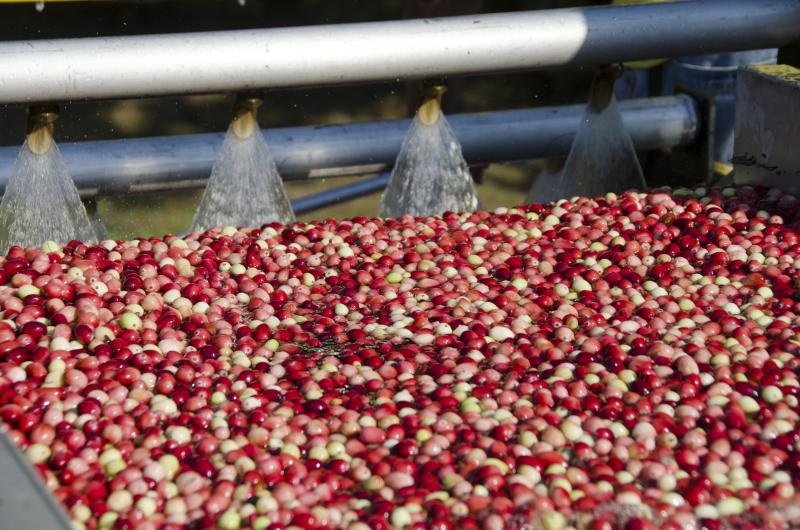Rochester cranberry growers discuss modern bogs
With Thanksgiving fast approaching, Rochester residents and owners of Hartley-Rhodes Bogs Woody and Sharon Hartley spent time on Thursday afternoon debunking the myths of one of the holiday’s staple foods - cranberries.
The biggest myth: Were cranberries actually eaten at the first Thanksgiving in 1621? Well, the jury is still out on this one.
“There’s some debate, but we just don’t know for sure,” Sharon said.
One thing is for certain - 100 percent cranberry juice is not meant for consumption.
“You can’t drink it,” Woody said. “It’s impossible because it looks like blood. it’s dark and thick. Most cranberry juice or cranberry cocktail is only 27 percent.”
Having owned and operated Hartley-Rhodes Bogs for the last 15 years, the husband and wife duo were on hand at the monthly meeting of the Mattapoisett Women’s Club to offer some insight into the history of the fruit as well as engineering a modern bog.
History of the berry
Along with blueberries and Concord grapes, cranberries are one of three native fruits commercially grown in the U.S.
The name cranberry comes from the way the berry looks hanging on the vine.
The early European settlers called it “craneberry” because they thought it resembled the head and the bill of a Sandhill crane, Sharon said.
When the Pilgrims arrived in Massachusetts in the early 1600s, Native Americans were using cranberries as food, dye for fabric, and as a healing agent on wounds, Sharon said.
“Native Americans knew the versatility of cranberries,” Sharon said. “They called it ‘ibimy,’ which means bitter berry.”
Sailors in Mattapoisett also used the berries as healing agents, a trick passed down from the early 1600s.
Building a modern bog
While many bogs have been passed down through generations of family members, Woody said the Hartley-Rhodes Bogs is relatively new.
The Hartleys purchased a 40-acre parcel of land from Woody’s parents in the 1990s, and because the land was mostly dry, they had to construct the bogs.
“We engineered the land and we created wetlands,” Woody said.
To create the modern bog, also known as a man-made bog, the Hartleys had to dig 15-foot ditches in the sand, remove trees from the 10-acre area, install wells for irrigation, and harvest the cranberry vines.
Bring in the bees
Being a small business means the Hartleys rely on help from others to maintain their bogs.
“We rent bees,” Woody said. “We bring the bees in because there are just not enough to pollinate the fruit.”
When it’s harvesting time, family and friends help out with the picking, sorting, and packaging of the cranberries.
“We started it and now we have four generations that help – my parents, us, our kids, and our grandchildren,” Woody said. “It’s manual labor, but everyone wants to help. This is worth learning.”















